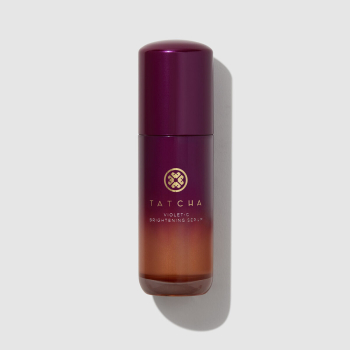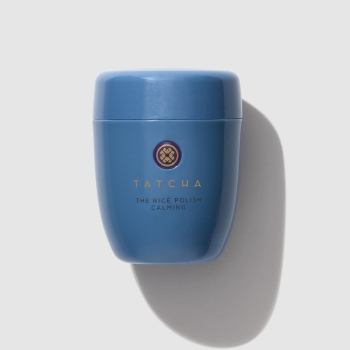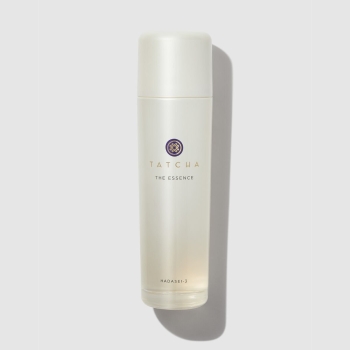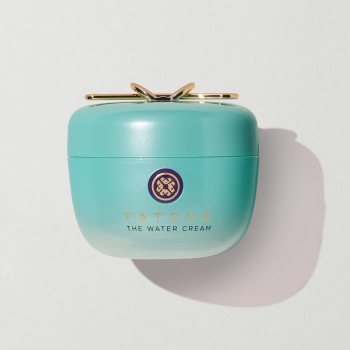How do you know if your skincare routine is working? For beauty enthusiasts, the journey to discovering the perfect skincare ritualis often filled with experimentation. But while seeking treasures that reveal your skin’s best potential, it can often feel hard to discern whether or not a product is truly working for you. The confusion can be puzzling and even frustrating when investing in products that don’t deliver the intended results.
Whether it’s a lack of immediate visual results, an unexpected reaction, or simple curiosity that has you wondering, we’ve created the ultimate guide that answers all of your skincare efficacy questions. Say goodbye to the days of “Is my skincare working?” and hello to your future as an informed beauty lover mdash; it all starts here.
How to know if a skincare product is working
The best sign of a skincare product working is that it feels comfortable on your skin. In some cases, so comfortable that you might not even notice it’s there! You might wake up in the morning and notice that your skin feels softer or smoother than usual, or you might look in the mirror and notice that your complexion seems a bit brighter and more radiant or you have fewer dark spots on your face— but sometimes, it takes a while (weeks to three months) to notice these differences. After all, when you look in the mirror multiple times daily, tiny changes might be lost on you.
If you want to see solidified proof that your skincare is actually working well with your skin, there are two easy ways to gauge progress with a new skincare treatment.
- Photographic Proof: Take a “before” picture of your skin on the first day of use. Take another on day seven, then after two weeks, then after a month. These visual progress reports should reveal the subtle changes in your skin. Pro tip: Take the photos in identical setups – the same lighting, background, etc. so you have infallible data.
- Mindful Awareness Method: This option is less scientific and requires a bit of mindfulness and awareness, but nobody knows your skin and its changes like you do. Try noting a specific area of concern, then monitor it throughout your treatment. Do you have a specific bumpy area on your forehead or an intense dry patch near your nose? Consider that your “test” zone for noticing changes or improvements after introducing a product.
Should you “feel” skincare products working? Can products be effective without burning?
The western beauty world teaches consumers that they need to feel burning for a product to work, but this is one of the biggest untruths in skincare. Your skin exists to protect you, and it communicates when it likes (or dislikes) something. Burning and itching are loud and clear indicators that your skin is unhappy with what you’re doing to it, so be sure to heed those warnings.
You don’t need to feel any prickling, itching, or burning sensations. In fact, experiencing such effects while using a new product is a clear sign that it's either too strong for your skin, or the wrong format of a treatment for you.
Itching and burning are signs of barrier disruption. Your skin is naturally meant to protect you — maintaining a good skin barrier is fundamental to good skincare, so you should always be mindful of harsh products. Avoid extreme formulas, which can create micro-tears in the skin, to avert this type of barrier disruption in your everyday ritual. The only time you should seek to purposefully disrupt your skin’s natural barrier is under supervised medical treatment; this type of dermatological treatment is not ideal for at-home use because you can end up overly sensitizing your skin.
We like to use the phrase “beauty without the burn” to describe our goal when formulating treatments: formulas that are both effective and kind to the skin.
How to tell if your skin barrier has been disrupted and the skin has been sensitized
Unfortunately, it’s quite easy to tell when your skin has been sensitized, because — as you might’ve guessed based on the term — your skin generally becomes more sensitive. Because it exists to protect you, healthy skin doesn’t react to its everyday environment. However, when your skin’s barrier has been compromised, everything can cause it to react. Your skin will feel much more affected by weather conditions and temperature, and you’ll be far more reactive to sun exposure when your barrier has become disrupted. Even water can burn sensitized skin, and old beauty favorites can suddenly cause reactions.
How long does it take to see results from a skincare product?
The best skincare is preventative, which — by definition — helps avoid issues instead of solving them. Taking vitamin C doesn’t cure a cold, but it does prevent a lengthy illness and severe symptoms. Skincare often operates in the same fashion. The idea of overnight transformation is an extremely western attitude toward beauty, and shouldn’t be what we seek from skincare. With that being said, however, here’s what you can expect to see when introducing a new treatment.
Any results’ timeline truly depends on the type of product you’re introducing into your ritual: some skincare has instant results, some products provide both instant results and effects that develop over time, and other skincare treatments only work over time. Cleansers and sheet masks, for example, should work instantaneously. Exfoliants and essences typically make an instant tactile difference in skin, but visual results usually won’t show until you’ve used them for a while. Generally, when it comes to skincare results, you can feel a difference sooner than you can see it.
To notice a visual difference in skin, it should take at least 30 days. A brightening treatment (like our beloved Violet-C Brightening Serum) needs daily use and at least four weeks to see noticeable results. Brightening products specifically need consistent and long-term outlooks because they go hand-in-hand with skin cell turnover. After a full cycle of skin turnover, you can observe whether the skin that’s resurfacing looks and feels healthier than it did before. When using this sort of vitamin C treatment, it’s important to maintain daily use in order to experience visible results and provide the routine nourishment necessary for general skin health.
How long before giving up on a new skincare product
Try to give your new product the appropriate trial period listed above. And most importantly, don’t introduce any other new products simultaneously to ensure an accurate assessment. After the 30 days — or the 45-60 days depending on the intensity of your treatment — evaluate how your skin looks and feels, then make your determination about whether to continue use.
All that said, if you don’t feel satisfied with a new product or treatment, you shouldn’t feel obligated to continue using it. Find what works best for you and complements your unique beauty.
How to know if a skincare product is not working
Beware of immediate negative effects, such as redness or irritation, which can quickly signal that you’re reacting to a new product. If you’re seeing any dramatic changes that don’t feel good for your skin, it’s probably not the right treatment for you.
It’s important to note that, even if a product has been clinically and dermatologically tested to be non-irritating and non-sensitizing, it doesn’t mean that you won’t have a personal sensitivity. Generally, ice cream is great for most people! But even with the tastiest scoop, you won’t enjoy how it feels for your body if you’re lactose intolerant; the same concept holds true for skincare.
A good rule of thumb when introducing new skincare is to patch-test — we recommend somewhere hidden, like the neck near your ear, or on your inner forearm — for a day or two before applying to the face. Personal sensitivities will usually make themselves known shortly after application.
Is there anything you can do to make a new skincare product work more quickly and effectively?
Ensuring that you keep skin at its most optimal level, both healthy-feeling and -looking, is the most vital step you can take to make your products work more effectively. Not over-complicating your skincare routine with multiple new formulas at once, as well as being gentle and mindful when touching your skin, are equally important, too.
There are a few products that will help your skin perform at its best.
- Exfoliation
Gentle exfoliation – emphasis on gentle first and foremost – can help you stimulate skin turnover and accelerate visible results in your new treatment. Try an ultra-sensitive option, like The Rice Polish: Calming, for a weekly treatment (or up to two or three times a week). This will help you remove excess dead skin cells, ensuring the product you’re testing out works even more effectively. - Essence
Proven to make your skincare more effective, essences are a beautiful formula to incorporate into your routine. Ideal for absolutely all skin types, the hydrating and plumping product primes the skin, helping to enhance the performance of skincare that follows. Apply our softening Essence before a new treatment to help super-boost the results.
In skincare, as in life, it’s about the journey, not the destination. It may take weeks, or even months, to discover your perfect skincare ritual. Be patient and kind – not only to your skin, but also to yourself.

Victoria Tsai
Chief Treasure Hunter





